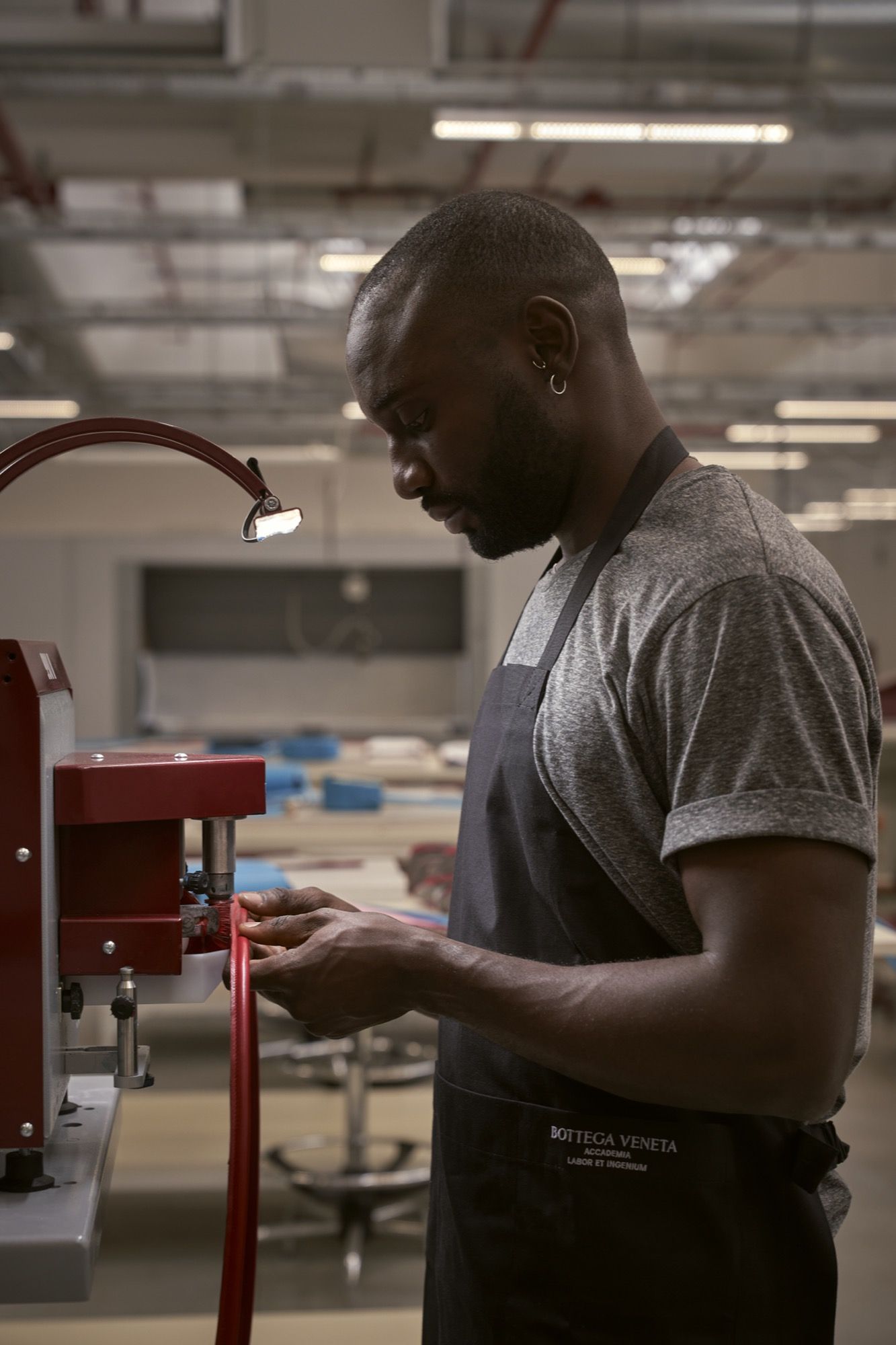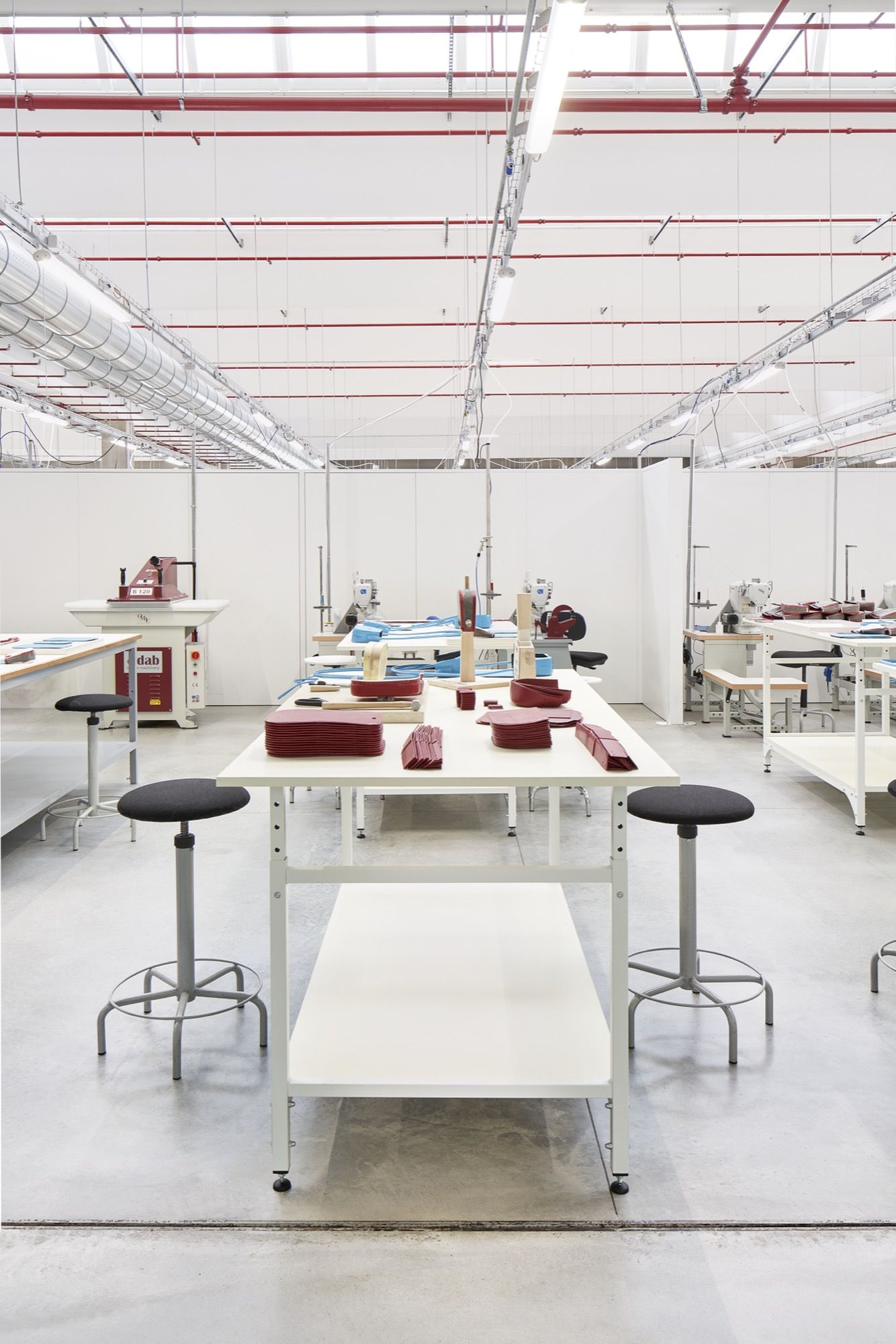
Why all brands should open a school of craftsmanship Bottega Veneta's newest Accademia Labor et Ingenium initiative is the perfect example
Since the dawn of its existence, fashion has lived in the dual spheres of commerce and creativity. Over the decades, one side or the other has occasionally prevailed, but in general, fashion has always strived to elevate itself beyond the status of industry, aiming to attain cultural and artistic significance. Brands collaborate with artists year-round, constantly attempting to present themselves as culture fosterers. Nevertheless, it's incredibly challenging for the fashion world to give birth to cultural products with their own independent status without making them seem simplistic and, in short, opportunistic. But if wrapping oneself in culture doesn't work, knowing how to preserve, transmit, and produce it might hold the key to this dilemma. But what kind of culture are we talking about? Certainly not the installations, temporary sculptures, and various ephemera that today's PR offices so eagerly embrace. We need to look deeper. Beyond creativity, beyond commerce, lies the element in which all luxury values converge: artisanal excellence. Without this production excellence, the very premise of luxury falls apart; without the hours an artisan spends crafting a handbag, without the technical knowledge of materials, luxury remains a phantom summoned by press releases. Fashion's unique culture is precisely that of craftsmanship – a culture whose preservation and transmission would not only transform brands into institutions but also create job opportunities for young artisans and contribute to the community. In short, more brands should open craftsmanship schools.
Just like in many other sectors, the demand for jobs in craftsmanship within the fashion industry is extremely high, and there is a risk that an entire generation of creatives may lose the valuable technical skills that have initially propelled fashion to its preeminent role. In France, for instance, there were 20,000 unfilled artisanal job positions by the end of 2022, according to the Comité Colbert, a consortium of luxury brands. The organisation's President and CEO, Bénédicte Épinay, even suggested that the actual number could be higher. In Italy, the outlook is equally concerning, with the Altagamma Foundation estimating a critical shortage of 94,000 technical positions in the Italian fashion industry over the next three years. This shortage is exacerbated by the significant expansion of the luxury sector over the past two decades, leading to an unprecedented demand for these specialised roles. Hans de Foer, the director of savoir-faire at the Institut Français de la Mode in Paris, described the severity of the situation to BoF, stating, «Fashion companies are facing a serious problem because nobody paid attention to what's happening in these areas. They are heading for mass retirements, which means that companies could lose their knowledge.» The imminent loss of these precious skills further intensifies the urgency of the problem.
Recognising the gravity of the situation, luxury brands are stepping up their efforts to attract and cultivate young talents in craftsmanship. Driven by the desire to train a new generation of artisans, Bottega Veneta has inaugurated the Labor et Ingenium Academy, a school dedicated to transferring the brand's rich heritage, techniques, and knowledge of savoir-faire art, aiming to train 50 students per year and guaranteeing them employment upon completion of the program. Bottega Veneta's CEO, Leo Rongone, rightly called this initiative a "key strategic pillar" for preserving their unique savoir-faire. In addition to Bottega Veneta, LVMH has recently launched the Métiers d'Excellence program, a practical training initiative aimed at preparing the next generation for the diverse skills required in its 280 specialised fields, while Chanel, as early as 2021, introduced a new campus dedicated to craftsmanship and education programs. Other renowned brands such as Hermès, Prada, and Brunello Cucinelli have established their own educational institutions, while Fendi, Ferragamo, and Loro Piana collaborate with Italian schools through the "Adopt-a-School" initiative by the Altagamma Foundation and the Italian Ministry of Education. However, the simplest and most effective program of all remains Bottega Veneta's, as studying at its academy, upon completion of the studies, equates to being hired: a direct channel between education and employment that eliminates the often lengthy and frustrating job search phase, providing a guarantee for once.
But cultivating a specialised workforce in craftsmanship is not simple. Despite significant investments of time and money, there is still a stigma surrounding these roles in the fashion world, often perceived as overly humble, lacking in gratification and visibility, un-dynamic, and obsolete. But things might be on the verge of change. It's no secret that emerging brands struggle to establish themselves: the legitimacy granted by fashion shows comes at a high cost, the already saturated market doesn't really need more clothes, and higher returns on investments can be found elsewhere. The dream of many creatives to start their own brand appears to be out of date. We could also add that even many existing brands don't seem necessary – if half of them closed, we might hardly notice. So, why aspire to be part of the 1% who make it when you could aim to be part of a more solid and secure system? Statistics tell us that even those in the highest layers of the system do not have an easy life, considering the constant turnover of creative directors from a thousand other brands who are constantly in a state of crisis. So, why not encourage young people to invest in practical skills and trades for which there are already ready job positions, for which demand will never run out, and whose practice could become even more expensive and profitable in the future? The truth about fashion may be harsh, but economic stability in such an unstable society is necessarily beautiful. In short, the elusive myth of a steady job, but make it fashion.




















































